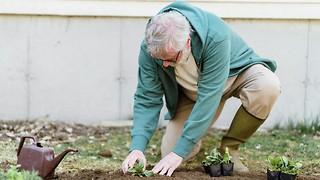Cambridge eco-racing in the Australian Bush
Could the solar cells used to power the Evolution racer make their way to ordinary cars?

Hot sun beating down, the smell of dust heavy in the still air. A lazy midday haze rises slowly off the vast expanse of red sand that stretches unbroken, towards an endless horizon of obscene blue. The silence of this panoramic vision is unbroken as a snake of electric cars speed their way across 3000 gruelling kilometres - powered only by the sun. In a feat of engineering brilliance and sheer perspiration, 46 teams representing 25 countries from across the globe are currently competing to become champions of the World Solar Challenge 2015. The World Solar Challenge is a biennial race across the Australian outback, from Darwin to Adelaide that showcases some of the latest innovations in solar technology and energy efficiency for transport applications. Twenty-fifteen will be the 4th consecutive time that the University of Cambridge Eco Racing (CUER) Team has represented the United Kingdom in the Challenge, which is being run between the 18-25th of October. This achievement is a testament to the inspiration, dedication, and technical expertise of the 50+ team of students who have worked tirelessly over the past 2 years to bring their newest car ‘Evolution’ to peak racing performance.
Evolution is truly space age, both in appearance and technical specifications. The unique teardrop-shape of the car is unlike that of typical solar vehicles; which have flat-topped, box-like structures to maximise the surface area available for solar panels. Instead, Evolution relies on having aerodynamic superiority to give it a competitive edge. As Programme Manager Aurelia Hibbert commented, “the benefit of our concept is that we are minimising the energy usage of the vehicle, rather than specifically maximising solar intake”. By optimising other design features of the car, such as aerodynamics, the Team hopes that “the fuel type can [be] changed, but the car will still remain very efficient”, an aspect that will hopefully contribute to the more rapid introduction of solar powered vehicles for general use.
Evolution has been updated in a number of ways since the previous CUER vehicle ‘Resolution’, which unfortunately was withdrawn from the 2013 World Solar Challenge only days before the race commenced because of instability problems. The 2015 Evolution model is wider, has a lower centre of gravity and stiffer tail-section.

One aspect of Evolution’s design that has not been altered since 2013 is the driver’s seat. “The first thing you notice when you get in is just how small the cockpit is! I’m only 5’5-5’6 and it was very tight…” says Richard Morris, a history PhD who was specially recruited by CUER to test-drive the vehicle. There is no room for creature comforts in eco-racing, with every ounce of weight increasing the demand for power and reducing speed. Three talented students (all under 5.5 ft!) will be guiding Evolution over the epic 5-6 day journey across the Australian interior. Regular rotation between the students is required to cope with the physically and mentally exhausting task of the race, which is not helped by the lack of air-conditioning or other luxuries in the cockpit. As daytime temperatures in the outback are forecast to hit 38-41°C for the duration of the race, I for one, am certainly not envious to be in the driver’s seat!
During the lead-up to the race, the Cambridge team were close with the 2 other teams representing the United Kingdom from Durham University and Ardingly College. However, it was the generosity of race favourites, the Dutch Team Nuon, in lending the CUER team a “very valuable spare part” last weekend that Hibbert cites as most memorable. This demonstration of team-spirit clearly exemplifies that the World Solar Challenge is not just a race, but an opportunity for people to work together to combat the global challenges of energy production and usage that affect all of us.
Over the weekend, the CUER Team successfully passed their final pre-race “scrutineering” assessment and completed a qualifying lap to position Evolution 30th on the starting grid. The race commenced on Sunday the 18th of October and 46 incredible cars are currently speeding their way towards Adelaide, while many of us here in Cambridge follow the progress of Evolution with bated breath. Varsity strongly supports the CUER Team and encourages readers to follow the Team’s progress at their website and join them for the 2017 Challenge.
 News / Uni Scout and Guide Club affirms trans inclusion 12 December 2025
News / Uni Scout and Guide Club affirms trans inclusion 12 December 2025 News / Cambridge Vet School gets lifeline year to stay accredited28 November 2025
News / Cambridge Vet School gets lifeline year to stay accredited28 November 2025 News / Cambridge study finds students learn better with notes than AI13 December 2025
News / Cambridge study finds students learn better with notes than AI13 December 2025 Science / Did your ex trip on King’s Parade? The science behind the ‘ick’12 December 2025
Science / Did your ex trip on King’s Parade? The science behind the ‘ick’12 December 2025 News / Pembroke to convert listed office building into accom9 December 2025
News / Pembroke to convert listed office building into accom9 December 2025







